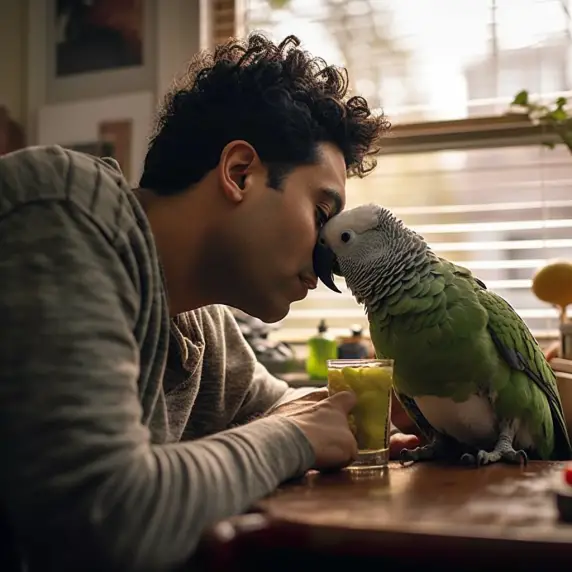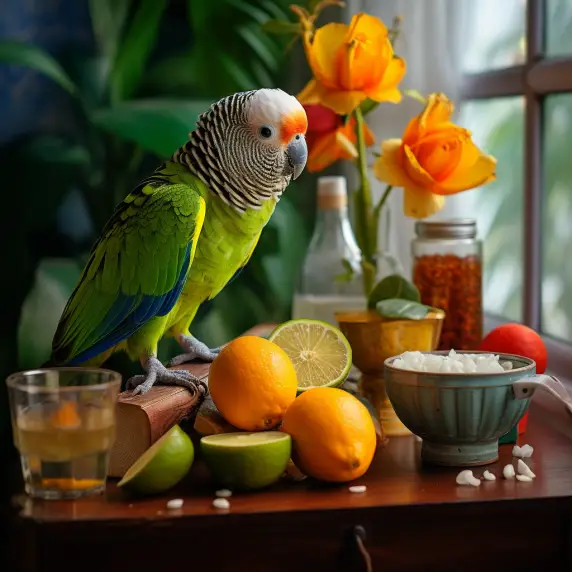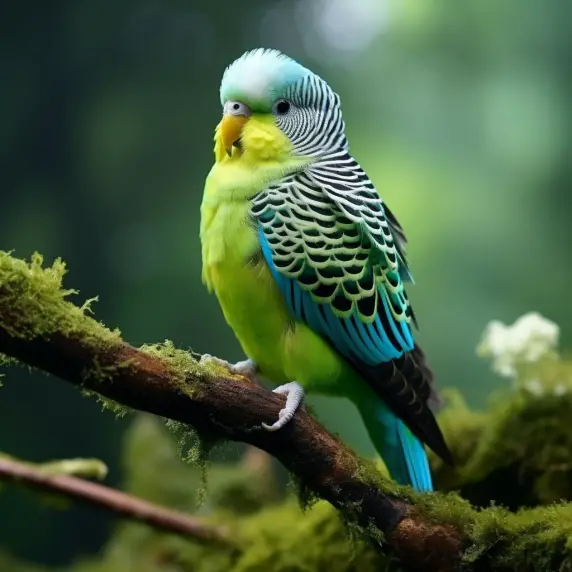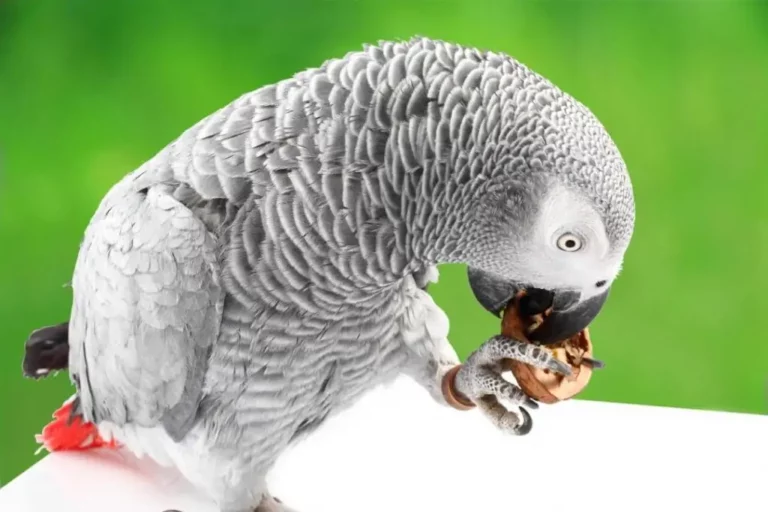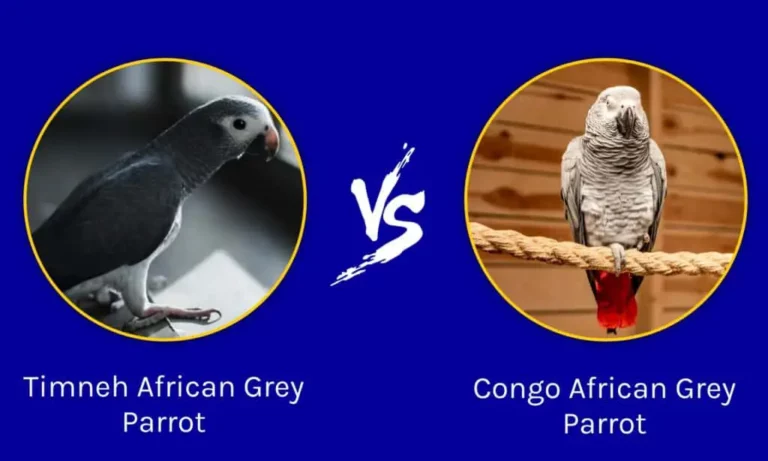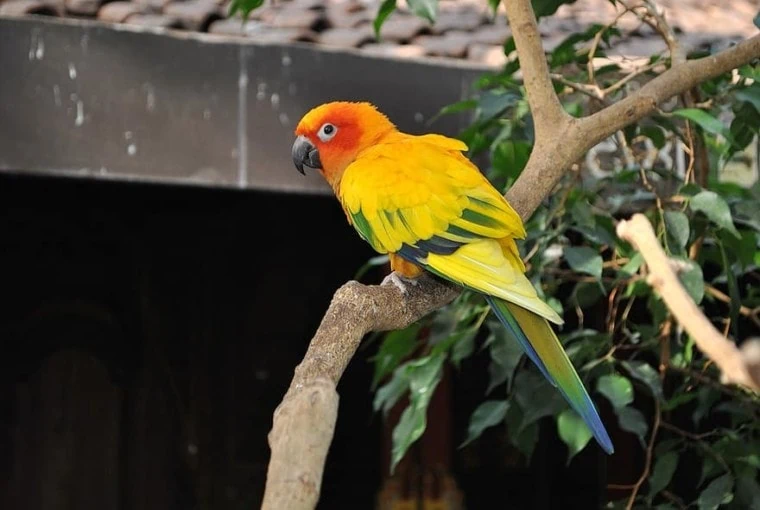Green Cheek Pineapple Conures: Everything You Need to Know!
Step into the vibrant and captivating world of the Green Cheek Pineapple Conures, a parrot species that’s as charming as it is colorful. Native to South America, these petite parrots with their mix of red, yellow, and green hues, are an exotic sight that bird enthusiasts can’t get enough of.
If you’ve ever wondered what it’s like to live with a Green Cheek Pineapple Conure, then you’re in for a treat. This post is your comprehensive guide to understanding their size, lifespan, behavioral traits, costs, and even the exciting variations such as the Blue Pineapple Conure.
Whether you’re a potential bird owner or a curious reader, you’ll find the world of these delightful parrots as engaging as it is informative.
Fasten your seatbelts as we take off on the fascinating journey of getting to know these magnificent birds.
Here’s a quick peek at what you’re about to discover:
Key takeaways
Discover the unique physical attributes of Green Cheek Pineapple Conures.
Understand their lifespan and the factors contributing to their longevity.
Explore the costs of owning a Pineapple Conure and the elements influencing their price.
Delve into the intriguing differences between Pineapple Conure and Green Cheek.
Learn about the Blue Pineapple Conure, a unique variant of this species.
Trace their ancestry, habitat, and social habits.
Uncover the ins and outs of their behavior and temperament.
Get insights into the health, care, and feeding of Pineapple Conures.
Understand their needs for intellectual stimulation and play.
Learn about the ideal cage specifications and breeding process for these birds.
Discuss the legal aspects of owning Pineapple Conures and the adoption process.
Short Answer: Green Cheek Pineapple Conures are small-sized parrots with a friendly and playful temperament. They can live up to 30 years with proper care, and while their cost may vary, the joy of having them as pets is priceless. These birds are not only good companions but also fascinating species to learn about, with their unique variations like the Blue Pineapple Conure.
Pineapple Conure’s Size and Physical Attributes
If there’s one thing you should know about the Green Cheek Pineapple Conure, it’s that their size certainly doesn’t determine their personality. These are small birds with big characters, making them all the more intriguing to bird enthusiasts and potential owners alike.
Measuring between 9 to 10 inches (22 to 25 cm) in length, these birds are compact enough to comfortably live in smaller homes or apartments. Their size makes them easy to handle, especially for those who may be new to bird ownership.
While they are petite, Green Cheek Pineapple Conures make up for their small stature with their striking coloration. The “pineapple” in their name refers to their unique color mutation.
The upper part of their bodies is usually a mix of red and yellow, while their chests are adorned with a beautiful blend of green and yellow feathers, giving them a ‘pineapple’ appearance. These colors can vary in intensity from bird to bird, making each Green Cheek Pineapple Conure distinctively beautiful.
Their striking emerald-green wings and blue flight feathers add to their vibrant color palette, providing a stunning contrast to their predominantly red and yellow bodies. Another distinctive feature is their white periophthalmic rings, the tiny circles of featherless skin around their eyes.
This, combined with their curved, dark beak, gives them a curious and endearing expression that’s hard to resist.
In essence, the Green Cheek Pineapple Conure may be small in size, but they are undoubtedly big in personality and color, making them one of the most captivating species in the parrot family.
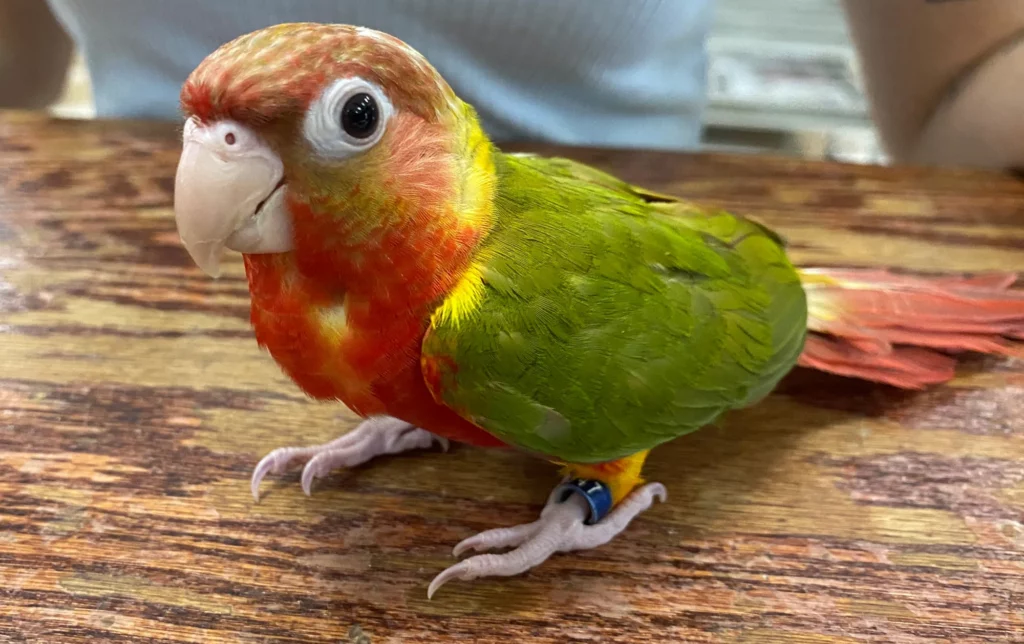
The Lifespan of Pineapple Conures
When it comes to owning a pet bird, particularly a Green Cheek Pineapple Conure, one question that frequently comes to mind is, ‘how long do they live?’ Understanding their lifespan is crucial as it can have significant implications on the level of commitment required from potential owners.
On average, these charming birds have an impressive lifespan ranging between 15 to 30 years. This longevity means that adopting a Green Cheek Pineapple Conure is not a decision to be taken lightly. Owning one of these birds is a long-term commitment and requires dedication from the owner.
Their longevity, however, is not a given. The lifespan of a Green Cheek Pineapple Conure is directly influenced by various factors, most significantly, the care they receive. This includes a balanced diet, regular vet check-ups, mental stimulation, and a safe, clean living environment.
Moreover, while these birds may have long lifespans, they remain vibrant and active throughout their lives. This vitality makes them excellent companions for bird enthusiasts willing to invest time and effort into their care.
In short, the Green Cheek Pineapple Conure is a parrot species that can share a significant part of your life journey with you. With their potential for a long lifespan, they are not just pets but become cherished family members, aging gracefully by your side.
Pineapple Conure Price
So, you’ve decided to welcome a Pineapple Conure into your life, but one crucial question remains – how much will it cost? Understanding the expenses associated with owning a Pineapple Conure is key to ensuring you’re adequately prepared for the journey ahead.
When it comes to the initial purchase price, Pineapple Conures generally range from $250 to $750, depending on various factors. These may include the bird’s age, overall health, color mutation, and the breeder’s reputation.
However, it’s essential to remember that the purchase cost is only the beginning. Owning a Pineapple Conure comes with ongoing expenses that can add up over time. This includes:
- Cage and Accessories: A sturdy, spacious cage is essential for your bird’s comfort and safety. Accompanied by necessary accessories like perches, toys, and feeding dishes, this could cost you anywhere between $100 to $300.
- Food: Pineapple Conures require a balanced diet of high-quality pellets, fresh fruits, and vegetables. This expense can run from $15 to $30 per month.
- Veterinary Care: Regular check-ups and unexpected medical emergencies can cost anywhere from $50 to $200 per visit, depending on the nature of the treatment.
- Toys and Enrichment: To keep your bird mentally and physically stimulated, you’ll need a range of toys and enrichment activities. The cost can vary, but budgeting around $10 to $20 per month is reasonable.
While the upfront cost of a Pineapple Conure might not seem too high, prospective owners should be aware that the real expense lies in their ongoing care. Ensuring you can comfortably afford these costs is the first step towards a rewarding and responsible pet ownership journey.
Pineapple Conure vs Green Cheek
In the world of conures, it’s common to hear terms like ‘Pineapple Conure’ and ‘Green Cheek Conure’ used interchangeably. While these birds share many commonalities, it’s essential to understand their differences to avoid any confusion.
To start, let’s clarify a common misunderstanding: a Pineapple Conure is, in fact, a type of Green Cheek Conure. The term ‘Green Cheek’ refers to the species (Pyrrhura molinae), while ‘Pineapple’ refers to a specific color mutation within this species.
Both these birds share many similar traits – they are similar in size, lifespan, and both have sociable, playful, and intelligent personalities. However, the primary distinction lies in their coloration.
The standard Green Cheek Conure has a primarily green body, with a greyish-green chest, a maroon tail, and a dark-colored beak. In contrast, the Pineapple Conure, a color mutation of the Green Cheek, has a blend of red, yellow, and green hues across its body, a lighter chest, and the signature red shading on their abdomen and back.
When it comes to their care, diet, and habitat requirements, there’s very little difference between the two. Regardless of their color mutation, all Green Cheek Conures, including Pineapples, require a balanced diet, social interaction, mental stimulation, and regular veterinary care to thrive.
Whether you opt for a Pineapple Conure or another Green Cheek Conure mutation, the joy of owning one of these vibrant, intelligent birds is universal. The choice primarily comes down to personal preference for their distinct coloration.
A Quick Look at the Blue Pineapple Conure
When exploring the world of Green Cheek Pineapple Conures, one color mutation that stands out is the Blue Pineapple Conure. As intriguing as their name suggests, these birds are a delightful addition to the wide palette of conure colorations.
The Blue Pineapple Conure possesses the classic Pineapple pattern but with a notable twist. Their usual green feathers are replaced by a mesmerizing blue, while the chest and belly areas retain the vibrant blend of red and yellow characteristics of Pineapple Conures.
The result is a strikingly beautiful bird that captivates bird lovers with its unique appearance.
It’s crucial to remember that while their coloration differs, the Blue Pineapple Conure shares the same care needs, personality traits, and lifespan as other Green Cheek Pineapple Conures.
They are just as intelligent, social, and playful as their other Green Cheek counterparts, requiring a balanced diet, regular veterinary care, and plenty of mental and physical stimulation.
The Blue Pineapple Conure offers an exciting color variation for those interested in the unique beauty of Green Cheek Conures.
Whether you’re an enthusiast, an owner, or someone considering adding one of these fascinating birds to your family, understanding their unique color mutation can add to the joy of learning about this species.
The Ancestry and Natural Habitat of Conures
If you’re fascinated by the world of Green Cheek Pineapple Conures, understanding their origins and natural habitat can add another layer of appreciation for these vibrant birds.
Green Cheek Conures, including the Pineapple variant, are native to the forests of South America. They are predominantly found in the countries of Brazil, Bolivia, Argentina, and Paraguay.
These birds favor subtropical or tropical, moist lowland forests, and heavily degraded former forests. Their natural habitats provide them with abundant food resources and the opportunity for social interaction, as these birds are often found in large flocks in the wild.
In terms of their ancestry, Conures belong to the parrot family and are closely related to macaws. While they may not share the size of their macaw relatives, they more than makeup for it with their vivacious personalities, vibrant coloration, and impressive intelligence.
Understanding the Green Cheek Pineapple Conure’s natural habitat and ancestry not only provides insights into their behavior and dietary needs but also highlights the importance of conservation efforts.
By knowing where these birds come from, we can better appreciate their needs and continue efforts to protect their natural habitats.
The Green Cheek Pineapple Conure’s South American origins and parrot ancestry play a crucial role in their unique characteristics, making them one of the most fascinating members of the parrot family.
The Behavior and Temperament of Pineapple Conures
Any conversation about Green Cheek Pineapple Conures would be incomplete without delving into their behavior and temperament. Their personality traits are what truly set them apart and make them such cherished pets.
Pineapple Conures are known for their sociable nature. They thrive on interaction, whether it’s with their human companions, other birds, or even self-engaging with toys in their environment. They are friendly and can form strong bonds with their owners, often seeking their company and attention.
Another noticeable trait of these birds is their playfulness. Pineapple Conures are active creatures who love to explore their surroundings, play with toys, and engage in games. This level of activity requires a stimulating environment to keep them happy and mentally healthy.
Despite their sociable and playful nature, these birds also have a quieter side compared to other parrot species. They are less noisy, making them a good choice for those who live in apartments or shared spaces.
While they are intelligent and relatively easy to train, their stubborn streak can sometimes present a challenge. Positive reinforcement training methods work best with these birds.
The Pineapple Conure’s sociable, playful, yet slightly quieter nature, coupled with their striking colors, makes them an excellent choice for bird enthusiasts. Whether you’re a first-time bird owner or an experienced bird keeper, understanding their behavior and temperament can help foster a rewarding and mutually beneficial relationship.
Care Guide for Pineapple Conures
When it comes to the wellbeing of Green Cheek Pineapple Conures, proper care is of utmost importance. Caring for these vibrant birds involves a blend of a balanced diet, suitable living conditions, regular exercise, and mental stimulation.
Diet: The diet of Pineapple Conures should consist of high-quality pellets as a base, supplemented with a variety of fresh fruits and vegetables. Also, occasional seeds and nuts can be offered as treats. Fresh, clean water should always be available.
Housing: Pineapple Conures need a spacious cage that allows them ample room to move, stretch, and play. Equip the cage with sturdy perches and a variety of safe, bird-friendly toys to provide mental and physical stimulation. The cage should be placed in a draft-free location, out of direct sunlight but within a family area where they can interact and feel part of the family.
Exercise and Enrichment: Being active and playful birds, Pineapple Conures require daily out-of-cage time for exercise and social interaction. Provide a variety of toys and rotate them regularly to keep your bird interested and stimulated.
Healthcare: Regular vet check-ups are crucial to monitor the health of your conure. Pay attention to any changes in their behavior, eating habits, or droppings, as these can be early signs of health issues.
Grooming: Regular baths or showers will help keep your conure’s feathers in good condition. Beak and nail care can be part of regular vet visits unless you’re experienced and comfortable doing it yourself.
Caring for a Pineapple Conure involves a comprehensive approach to their diet, housing, exercise, healthcare, and grooming. Remember, a well-cared-for conure is a happy and healthy bird, providing endless joy and companionship.
Intellectual Needs: Play and Enrichment for Pineapple Conures
Beyond their basic care needs, Green Cheek Pineapple Conures have a profound need for play and mental stimulation. These birds are highly intelligent and active, making play and enrichment a crucial part of their care routine.
Toys: A variety of bird-safe toys should be part of every Pineapple Conure’s environment. Chewable toys made of wood or safe plastics can help keep their beak healthy, while puzzle toys can stimulate their problem-solving skills. Rotating these toys regularly helps maintain their interest and curiosity.
Out-of-Cage Time: Providing your Pineapple Conure with time outside the cage each day is essential. This allows them to stretch their wings, explore, and interact more freely with their human companions. Supervised out-of-cage time in a secure room can provide valuable mental and physical stimulation.
Training: Pineapple Conures are smart birds capable of learning tricks and commands. Training sessions using positive reinforcement techniques can be a great way to engage their minds and strengthen your bond.
Social Interaction: These birds are naturally sociable and thrive on interaction. Regular engagement with their human family members is important for their mental well-being. Even simply talking to your conure can offer valuable social interaction.
Foraging: Encourage natural foraging behaviors by hiding treats or food in their toys or around their cage. This can provide hours of entertainment and mental challenge for these intelligent birds.
Catering to the intellectual needs of Pineapple Conures involves incorporating a blend of toys, training, social interaction, and foraging activities into their daily routine. This holistic approach to play and enrichment contributes to a mentally stimulated, satisfied, and well-rounded bird.
Choosing the Perfect Home: Cage Specifications for Pineapple Conures
Selecting the right cage for your Green Cheek Pineapple Conure is a vital aspect of their care. The cage should serve as a safe, comfortable, and stimulating environment for your feathered friend.
Size: As a rule of thumb, bigger is always better when it comes to bird cages. A cage for a Pineapple Conure should be spacious enough for them to fully spread their wings and move around comfortably. A minimum cage size of 24″x24″x24″ is generally recommended, but larger is preferable.
Bar Spacing: The bars on the cage should be spaced appropriately to prevent your bird from getting their head or body stuck. For Pineapple Conures, a bar spacing of 1/2″ to 3/4″ is ideal.
Material: The cage should be constructed of durable, non-toxic material. Stainless steel is often recommended due to its durability and ease of cleaning.
Design: The cage should include a removable tray for easy cleaning and doors that securely lock to prevent any crafty escapes. Horizontal bars can offer more climbing opportunities, and a cage with a top that opens can provide an additional play area.
Location: Place the cage in a quiet, draft-free location, out of direct sunlight but within a family area where they can interact and feel part of the family.
Interior Setup: Equip the cage with a variety of perches of different materials and diameters to keep your conure’s feet healthy. Also, include a variety of toys for mental stimulation.
Choosing the right cage for your Pineapple Conure involves considering factors such as size, bar spacing, material, design, location, and interior setup. With the right cage, you can create a comfortable and stimulating home for your bird.
Breeding Pineapple Conures: What You Need to Know
Embarking on the journey of breeding Green Cheek Pineapple Conures can be a rewarding, albeit challenging endeavor. If you’re considering this, it’s important to understand the process and the responsibility it entails.
Sexing: First, you’ll need to confirm the sex of your conures. Sexing based on physical characteristics can be tricky with Pineapple Conures, so DNA testing is usually the most accurate method.
Age: Conures should be at least 1 to 2 years old before they start breeding. This gives them time to reach sexual maturity and reduces the risk of complications.
Pairing: Conures often form strong bonds with their chosen partners. It’s ideal to let your conures choose their own mates rather than forcing a pair.
Nesting: Provide a suitable nesting box inside the cage. The box should be spacious, secure, and filled with suitable nesting material like wood shavings.
Eggs and Incubation: A Pineapple Conure female typically lays 4 to 6 eggs, with an incubation period of around 23-26 days. The female will do most of the incubating.
Caring for Chicks: Once the chicks hatch, both parents usually participate in their care. Be prepared to step in if the parents don’t properly care for the chicks. Hand-rearing requires considerable knowledge and commitment, so it’s recommended to seek professional advice if this situation arises.
Breeding Responsibility: Breeding birds should be undertaken responsibly, considering the availability of suitable homes for any potential offspring. Also, ensure you’re familiar with any legal regulations regarding the breeding of birds in your area.
Breeding Pineapple Conures involves careful consideration of various factors, including sexing, age, pairing, nesting, and caring for the chicks. Remember, responsible breeding practices are vital for the well-being of the birds and the sustainable growth of the conure community.
The Legality and Adoption Process for Pineapple Conures
Understanding the legality and adoption process of Green Cheek Pineapple Conures is key for any prospective conure owner. Here’s a brief overview of what you need to know.
Legal Considerations: Before adopting a Pineapple Conure, it’s essential to verify the legal regulations regarding bird ownership in your local area. Some areas may require specific permits or licensing, while others might have restrictions on certain species. Always ensure that you’re compliant with all legal requirements.
Adoption Process: Adoption typically begins with a search for a reputable breeder, pet store, or rescue organization. Be wary of entities that don’t prioritize the birds’ health and well-being.
- Research: Start by doing thorough research about the source from which you plan to adopt. Check reviews, ask for recommendations, and ask plenty of questions about the bird’s history and health.
- Visit: Visit the location if possible. Look at the conditions in which the birds are kept. They should be clean, well-lit, and spacious enough for the birds.
- Questions: Don’t hesitate to ask questions about the bird you’re interested in. Enquire about its age, health, diet, and behavior.
- Health Check: Before finalizing the adoption, it’s wise to have the bird examined by a vet to ensure it’s healthy. Look for a bird that is alert, active, and shows no signs of illness such as discharge from the eyes or nose, fluffed feathers, or lethargy.
Post-Adoption: After adopting your Pineapple Conure, it’s your responsibility to provide a nurturing environment, proper care, and lots of love.
Adopting a Pineapple Conure involves legal considerations and a meticulous adoption process. Doing your due diligence before adoption ensures that you are fully prepared for the responsibility and joy of welcoming a Pineapple Conure into your family.
Frequently Asked Questions
Are Pineapple Green Cheek Conures rare?
No, Pineapple Green Cheek Conures aren’t considered rare. They are a color mutation of the Green Cheek Conure and are fairly common in the pet trade. You should be able to find them available from breeders and pet stores.
Do Pineapple Green Cheek Conures make good pets?
Yes, Pineapple Green Cheek Conures make excellent pets! These vibrant birds are known for their friendly and playful nature, intelligence, and capacity to form strong bonds with their owners. They are also relatively quiet compared to larger parrot species, making them suitable for apartment living.
However, they do need regular social interaction and mental stimulation, so they’re best for individuals who can devote sufficient time to their care.
How much does a Pineapple Green Cheek Conure cost?
The cost of a Pineapple Green Cheek Conure can vary widely based on factors like the bird’s age, the breeder’s reputation, and geographical location. On average, you can expect to pay anywhere from $250 to $750.
However, remember that the initial cost is just the beginning. You’ll also need to budget for essential supplies like a cage, toys, and food, as well as ongoing expenses like vet care.
Do Pineapple Conures speak?
Pineapple Conures, like most conures, have the capacity to mimic sounds and learn a limited number of words. However, they are not renowned for their talking ability, and their speech may not be as clear or extensive as larger parrot species.
They communicate more commonly through a variety of sounds and “conure chatter.” Nevertheless, each bird is an individual and some may show more inclination towards vocal mimicry than others.
Final Thoughts: The Pleasure of Parenting a Pineapple Conure
In conclusion, bringing a Green Cheek Pineapple Conure into your home is a decision that comes with many rewards. These vibrant, intelligent, and sociable birds have the potential to become a beloved part of your family.
They offer endless entertainment with their playful antics and have the ability to form strong bonds with their human companions. Being a Pineapple Conure parent also presents the opportunity to appreciate the complex behaviors and fascinating idiosyncrasies of these beautiful creatures.
However, with pleasure comes responsibility. Proper care, adequate attention, and a commitment to their well-being are non-negotiable.
As we’ve explored in this guide, every aspect from understanding their physical attributes, behavior, and care requirements, to acknowledging the cost of ownership, choosing the right cage, and responsible breeding, all contribute to creating a nurturing environment for these birds.
If you’re prepared to commit to these responsibilities, the joy of parenting a Pineapple Conure can indeed be a profoundly fulfilling journey. Remember, your bird relies on you for its health and happiness, and in return, you will be rewarded with companionship, affection, and the sheer pleasure of sharing your life with a truly remarkable creature.

